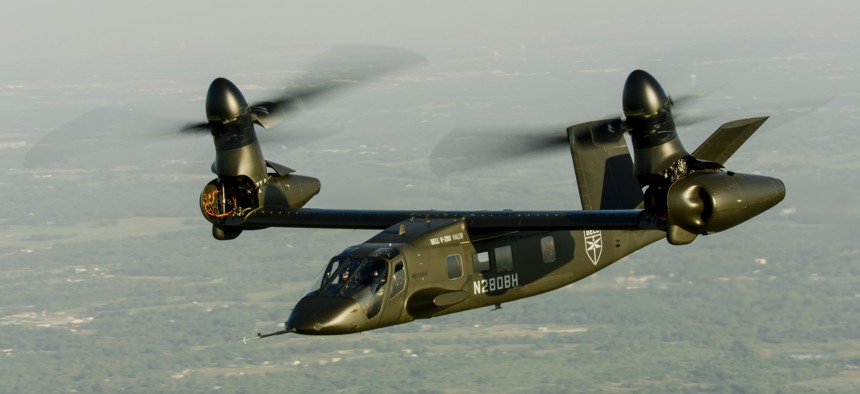Bell Picks Rolls-Royce Engine for V-280 Valor in Army Black Hawk Replacement Contest
The move dramatically increases the horsepower of the V-280 over the General Electric engines it uses today.
Bell plans to install a version of the Rolls-Royce-made V-22 Osprey engine in the V-280 Valor— an aircraft the company is pitching in a U.S. Army competition to replace the venerable Black Hawk helicopter.
The decision to swap out General Electric engines used on the V-280 prototype today for more powerful ones made by Rolls-Royce was revealed by the CEOs of Bell and Rolls-Royce North America during the Defense One Global Business Briefing on Thursday. Using a version of the Osprey engine, they say, will lower the long-term maintenance costs.
“In history, we know what it costs and we know how to take costs out of sustainment,” said Tom Bell, president of Rolls-Royce Defence and chairman & CEO of Rolls-Royce North America.
The companies plan to formally announce the new V-280 engine pact at the Association of the U.S. Army annual conference in Washington next week. The new engine will be designated the 1107F (the Osprey engine is the 1107C), part of Rolls-Royce’s ”AE” family of engines, Bell said. Rolls-Royce has delivered more than 7,000 engines in its AE family, Bell said. Those engines have more than 82 million flight hours.
Bell’s V-280 Valor is competing against the SB>1 Defiant, a compound helicopter jointly developed by Lockheed Martin’s Sikorsky and Boeing. The Army project to replace its Black Hawks is known as the Future Long-Range Assault Aircraft, or FLRAA.
Bell’s V-280 prototype is currently powered by the General Electric T64, a turboshaft engine used for decades in early-model Sikorsky H-53 heavy lift helicopters. The Rolls-Royce engine produces 7,000 shaft horsepower compared to the T64, which is rated at 5,000 shaft horsepower.
Like the Osprey, which Bell jointly makes with Boeing, the V-280 is a tiltrotor aircraft that takes off and lands vertically like a helicopter, but can rotate its propellers forward to fly fast like a fixed-wing plane. But unlike the Osprey, the engines, mounted on the wingtips, don’t rotate on the V-280, only the props themselves. Having a fixed engine is expected to lower maintenance costs as well as allow soldiers to use the V-280s sliding side doors.
“One of the brilliant things...the Bell team did was [they] designed the V-280 so that the whole nacelle didn't rotate, but only the prop,” Bell said. “Integrating that with our 1107F is going to make for an even cleaner, even more sustainable approach to the power plant of the V-280.”





